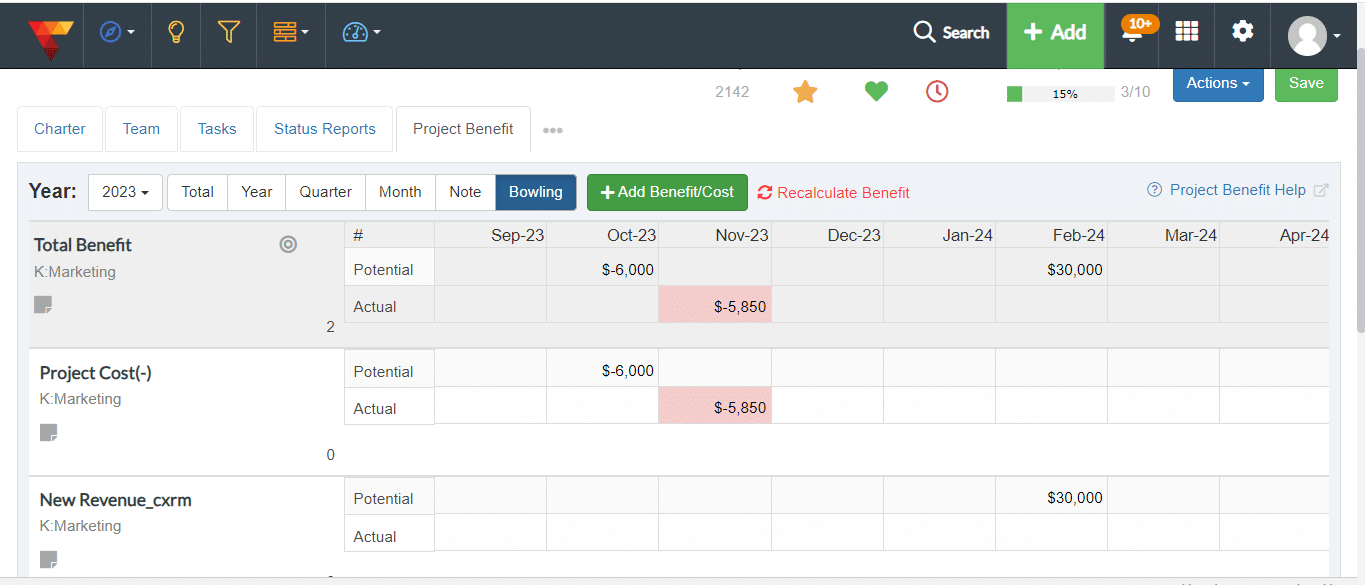In today’s hyper-competitive marketplace, business owners, sales managers, and decision-makers are under immense pressure to squeeze every ounce of value from their investments. Forget guesswork; the path to amplified ROI lies in data-driven strategies and the right tools. Are you ready to transform your sales performance and unlock unprecedented growth? This article reveals seven proven strategies, bolstered by cutting-edge software, designed to illuminate the path to maximizing your return.
Imagine having the power to precisely pinpoint areas of inefficiency and capitalize on high-performing initiatives. That’s the advantage of leveraging data-driven tools. We’ll delve into how strategic KPI tracking, coupled with robust software solutions, can revolutionize your sales approach. By focusing on measurable results and actionable insights, you can shift from reactive problem-solving to proactive optimization, ensuring every dollar invested contributes directly to your bottom line. Let’s explore the practical steps and powerful technologies that will elevate your ROI and drive sustainable sales growth.
Main Takeaways From This Article:

Main Takeaways From This Article:
Understanding ROI and Its Importance
Return on Investment (ROI) is a key financial metric that assesses the efficiency or profitability of an investment relative to its cost. It’s a broader concept that encompasses not only generating more revenue but also strategically reducing costs and enhancing operational efficiency. Increasing ROI isn’t solely about boosting income; it equally involves minimizing waste, streamlining processes, and optimizing resource allocation to improve the bottom line. By focusing on both revenue growth and cost reduction, businesses can achieve a more sustainable and significant increase in their overall return on investment.
How to Measure ROI Effectively
ROI measurement is crucial for evaluating the success of strategies and investments. Using the correct formula and relevant metrics is essential to accurately assess their effectiveness, going beyond just revenue figures. Key Performance Indicators (KPIs) provide the necessary data and insights to evaluate ROI precisely, enabling businesses to identify which strategies and investments are delivering the best returns and driving overall profitability.
Basic ROI Formula
The basic Return on Investment (ROI) formula is calculated as .
This formula determines the percentage return on an investment relative to its cost. It essentially shows how much revenue is generated for every unit of investment, expressed as a percentage, providing a straightforward measure of investment efficiency. However, it’s crucial to remember that this basic formula doesn’t account for factors like the time value of money, the duration of the investment, or the level of risk involved, which are important considerations for a comprehensive financial evaluation.
7 Business Strategies to Increase ROI
To boost profitability and improve your Return on Investment (ROI), businesses can strategically focus on various key areas. The following seven strategies outline actionable approaches to enhance both revenue streams and operational efficiencies, ultimately leading to a greater return on invested capital.
1. Increase Sales Through Strategic Growth Initiatives
Focusing on high-impact revenue drivers is a direct path to a stronger ROI. By strategically improving lead conversion rates, businesses can turn more prospects into paying customers, maximizing the return on marketing and sales efforts. Increasing the average deal size means each successful transaction generates more revenue, directly boosting profitability. Furthermore, enhancing customer lifetime value ensures long-term revenue streams from existing customers, making retention efforts highly ROI-positive. Tracking KPIs like Lead Conversion Rate, Average Deal Size, and Customer Lifetime Value provides critical insights into the effectiveness of these revenue-generating initiatives.
2. Streamline Operations and Reduce Waste
Reducing inefficiencies in operational processes directly translates to a higher ROI by lowering costs associated with waste, rework, and unnecessary steps. When businesses streamline their workflows, they can produce more output with the same or fewer resources, leading to a lower cost per unit. This improved efficiency not only cuts expenses but also frees up resources that can be reinvested for further growth, ultimately boosting the overall return on investment. Tracking KPIs like Cost per Unit, Cycle Time Reduction, and Overall Equipment Effectiveness (OEE) helps monitor and measure the success of these streamlining efforts.
3. Improve Equipment Utilization and Maintenance
Optimizing the use of existing equipment directly contributes to higher profitability by maximizing the output generated from these assets. By preventing costly downtimes through proactive maintenance and ensuring equipment operates at its full potential, businesses can avoid production losses and the expenses associated with repairs. Improved asset utilization means resources are used more effectively, leading to a greater return on the initial investment in the equipment. Key KPIs to track include Downtime Rate, Maintenance Costs vs. Revenue, and Production Yield, which provide insights into the efficiency and effectiveness of equipment management.
4. Enhance Workforce Productivity and Employee Retention
Investing in effective workforce management and utilizing data to track performance can significantly increase ROI through improved productivity and reduced employee turnover. A more productive workforce accomplishes more with the same resources, directly impacting output and profitability. Lower employee turnover reduces the costs associated with recruitment, hiring, and training new staff, while retaining experienced talent preserves valuable knowledge and skills within the organization, contributing to a higher return on investment. Key KPIs to monitor include Employee Productivity Rate, Task Completion Time, and Revenue per Employee, which reflect the efficiency and impact of the workforce.
5. Leverage Data-Driven Decision Making
Making business decisions based on real-time data eliminates guesswork and allows for more precise allocation of resources, directly optimizing ROI. By analyzing relevant data, businesses can identify high-performing strategies, understand customer behavior, and predict future trends, leading to more informed investments and resource deployment. This data-driven approach minimizes wasted effort on ineffective initiatives and maximizes the impact of successful ones, ultimately resulting in a higher return on investment. Key KPIs to track include Forecast Accuracy, Customer Retention Rate, and Marketing ROI, which measure the effectiveness of data-informed strategies.
6. Optimize Supply Chain and Inventory Management
Efficiently managing the supply chain and inventory levels directly impacts ROI by minimizing unnecessary costs and accelerating delivery times. Reducing inventory waste through better forecasting and management frees up capital and reduces storage expenses. A streamlined supply chain ensures timely delivery of goods and services, improving customer satisfaction and potentially increasing sales. By cutting unnecessary costs associated with inefficient logistics and excess inventory, businesses can significantly improve their overall return on investment. Key KPIs to track include Inventory Turnover Rate, Supplier Performance, and Order Fulfillment Time, which reflect the efficiency of the supply chain and inventory management processes.
The Importance of KPIs
Forget chasing abstract goals; KPIs are the tangible building blocks for achieving a strong Return on Investment. KPIs break down broad ROI objectives into specific, measurable, and actionable metrics that businesses can actively manage. By tracking KPIs, organizations gain the insights needed to make informed decisions, identify operational inefficiencies, and strategically adjust their approaches for better ROI. For instance, revenue KPIs like Customer Lifetime Value, cost KPIs such as Cost of Goods Sold, and efficiency KPIs like Customer Acquisition Cost provide concrete data points to evaluate performance. Ultimately, consistently measuring success through KPIs is just as critical as implementing the strategies themselves to drive meaningful improvements in ROI.
Using Data Analytics & KPI Fire to Drive ROI Improvements
KPI Fire is more than just a tool for tracking numbers; it’s a catalyst for tangible ROI improvements by transforming raw data into actionable intelligence. This performance management software provides a dynamic platform to visualize key metrics in real-time, allowing businesses to instantly identify areas of inefficiency, celebrate successes, and gain clear insights for strategic adjustments. By offering a comprehensive view of performance data, KPI Fire empowers organizations to make data-driven decisions that directly lead to increased sales, streamlined operations, and reduced waste, ultimately driving a significant and measurable improvement in their Return on Investment.
- Define and monitor the KPIs that matter most: Tailor your dashboard to your unique business goals, whether it’s boosting lead generation, nurturing conversions, or enhancing customer retention.
- Track Project Benefits: Dive deeper than surface-level numbers. Uncover hidden trends, pinpoint underperforming channels, and identify individual sales rep strengths and weaknesses.
- Visualize performance with stunning clarity: KPI Fire transforms data into captivating dashboards and reports, making complex insights instantly digestible for every team member.
- Foster data-driven decision making: Empower your sales team to move beyond instinct and intuition. Base every decision on concrete data, ensuring laser-focused strategies that yield tangible results.
Existing Customers Achieve 20% Sales Increase with KPI Fire
The benefits of KPI Fire aren’t theoretical constructs. They’re real-world results. Companies that leverage this powerful software consistently report:
- 20% or higher increases in sales: By optimizing campaigns, allocating resources effectively, and closing performance gaps, KPI Fire drives a sales revolution.
- Dramatic ROI improvements: Every dollar invested in KPI Fire translates into tangible, measurable returns, making it a sound investment with rapid payback.
- Enhanced sales team productivity: Equipped with real-time insights and actionable recommendations, sales reps work smarter, not harder, closing more deals and exceeding targets.
- Improved customer satisfaction: By identifying and resolving customer pain points proactively, KPI Fire fosters loyalty and repeat business, boosting customer lifetime value.
Your Content Goes Here




